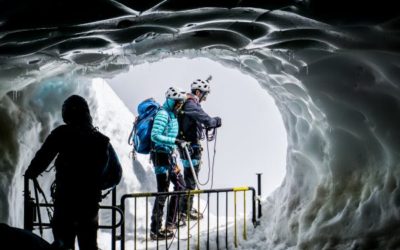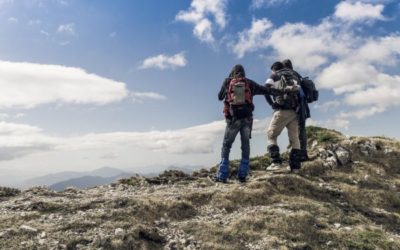Why do so few experiential educators look to Jesus’ as a model experiential educator? This is like taking William Shakespeare or Charles Dickens out of an English Literature course. It can be compared to MBA program not mentioning Steve Jobs or Peter Drucker. For experiential learning advocates and outdoor education specialists, trying to avoid looking at Jesus as a model master teacher is just as ill-informed as an architecture professor neglecting to draw attention to Frank Lloyd Wright or Fredrick Law Olmsted. After devoting a lot of time to studying the teaching techniques of Jesus, I can confidently say that outdoor educators and experiential learning teachers need to look no further than Jesus to find a master experiential educator..
I believe that Jesus is not mentioned as a master experiential learning educator because of an inadequate awareness of the facts.
Experiential learning teachers love to keep their message simple and to use profoundly transforming teaching techniques. Jesus message was simple and his methods were even more profound. The essence of his simple message was: “The time has come… The kingdom of God is near. Repent and believe the Good News” (Mark 1:15; parallel passages: Matt. 4:17, Luke 4:16-21, John 1:12-13). He never swayed from that basic message because he really cared about people being reconciled to God. But what about his methods? Why were his teaching techniques so incredibly effective? These are the questions that experiential educators always ask.
RELATED: A Study on the Experiential Learning Teaching Methods of Jesus
JESUS’ EXPERIENTIAL LEARNING TECHNIQUES WERE AS DIVERSE AS HIS AUDIENCE
Jesus used disequilibrium and novel settings. He advocated cooperation and used anticipitory sets of unique problem solving situations. Jesus briefed and debriefed countless experiences. And he helped his followers move from processing their experiences to generalized transfer toward future endeavors. [1]
History agrees that Jesus’ simple messages framed the trajectory of his ministry for the last three years of his life before he died on a cross for the sins of humanity. He never deviated from this message. Yet although his message was plain and simple, being a master teacher, Jesus also knew that for people to embrace what he was teaching required a more hands-on, experiential approach to teaching.
RELATED: Great Outdoor Facilitation Doesn’t Do These Things…
Jesus’ methods for communicating were as diverse as his audience. He employed a wide range of experiential learning techniques to engage those who followed him around. In order to identify the key elements of Jesus’ methodology, you first have to look at the teaching techniques he used followed by the setting in which he taught.
Robert Stein analyzes Jesus’ style of teaching in, The Method and Message of Jesus’ Teachings:
Without the aid of modern day audiovisual materials and props, Jesus was able to capture the attention of his audience.
Jesus used many techniques to arouse interest. He used of overstatements, hyperboles, puns, similes, metaphors, proverbs, riddles, paradoxes, a fortiori, irony, and parables. Questions and humor were the main literary devices he employed to stimulate curiosity.
Just how interesting was Jesus to his audience? So interesting that at one point:
The crowds simply forgot about their need for food because of their fascination and interest in [His] teaching (Stein, Read Mark 6:35-36)
RELATED: 110 Ways Wilderness Theology Meets Our Need for Retreat
HOW JESUS MADE HIS TEACHING STICK THROUGH EXPERIENTIAL LEARNING?
In addition to the staggering number of literary techniques Jesus employed to arouse interest, he was also sensitive to timing. Jesus was the master of using the surrounding setting to create an experiential climate for learning. It is impossible to generalize the philosophy of such a brilliant experiential learning educator as Jesus, but if you want to boil down Jesus’ experiential teaching philosophy into a simple formula, I gave it a shot in my book, Christian Outdoor Leadership: Theology, Theory, and Practice. I believe you can boil down the essence of Jesus’ experiential learning philosophy into this simple formula: S+T+IC=K (Setting + Timing + Intentional Content = Knot). I call it the “STICK” method, to make the point that, like no other experiential learning teacher before or after him, his teachings “stuck” to people. Like Duct Tape, when Jesus taught, people listened and were forever changed.
LET’S DO THIS!
WHAT IS ONE EXPERIENTIAL LEARNING TECHNIQUE YOU RECOGNIZE IN THE WAY JESUS TAUGHT?
DO YOU THINK EXPERIENTIAL LEARNING EDUCATORS NEED TO AVOID MENTIONING JESUS?
DO YOU AGREE THAT TO AVOID MENTIONING JESUS AS A MODEL EXPERIENTIAL LEARNING EDUCATOR SHOWS AN INADEQUATE AWARENESS OF THE FACTS?
[1] Many of these concepts are outlined and explained in Luckner and Nadler’s Adventure Based Learning Processing Model. I use these terms to illustrate that there are ancient examples of these modern experiential learning techniques.




